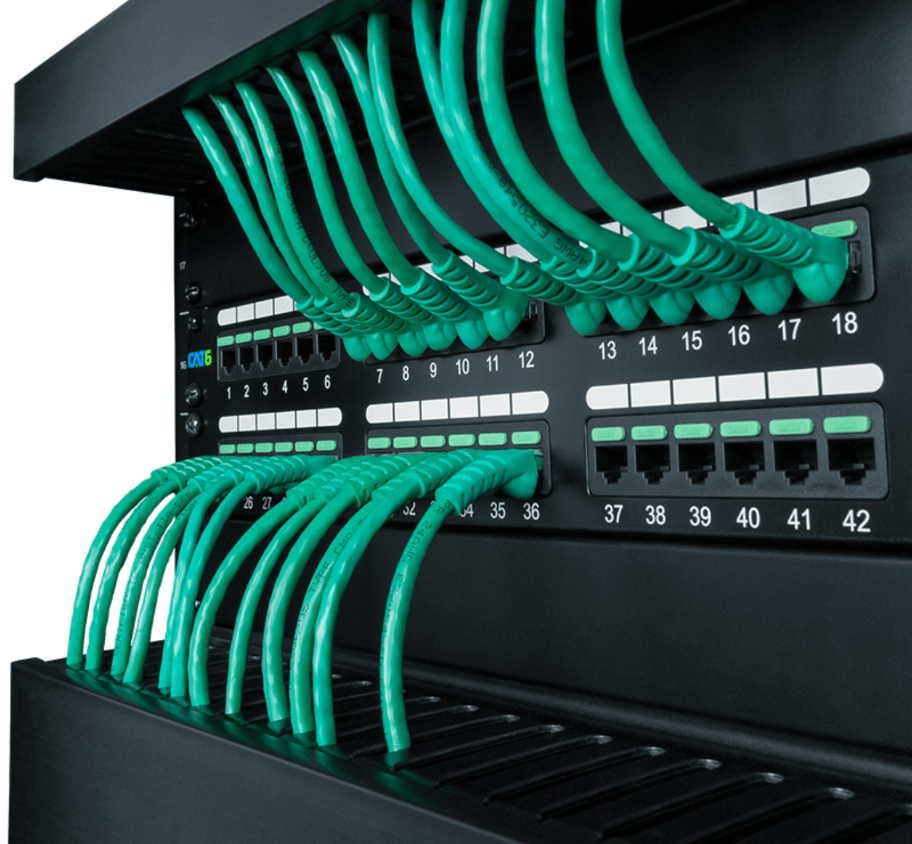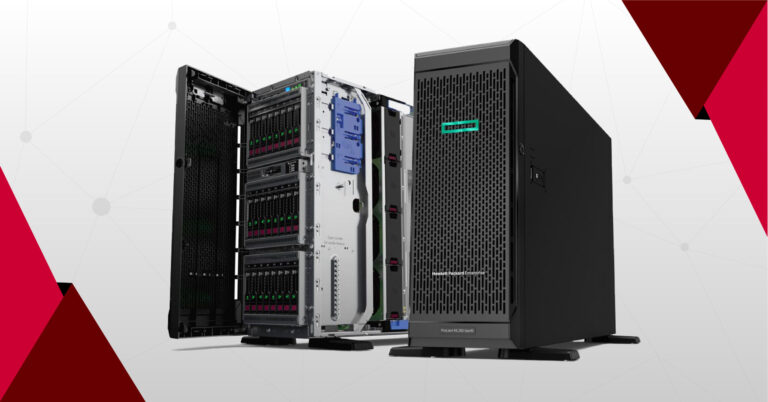Copper wire and fiber optic cables are common cables for modern data transmission. For decades, copper wire ruled as the standard for Network Cabling. Fiber optic wiring is the newcomer that increasingly becomes the cable of choice for many businesses. However, some companies transmitting large amounts of data find that older copper systems are no match for the requirements of modern technology. Both approaches have positive and negative considerations.
Advantages and Disadvantages of Copper vs. Fiber
Numerous studies have examined the advantages and disadvantages of copper and fiber data wiring. For example, one study in Mdantsane, South Africa published in the Journal on Innovation and Sustainability found the initial cost of deploying fiber optic networks was the biggest hurdle in choosing fiber cabling.1 Another study by Logeshwaran in the Journal on Communication Technology indicates some essential considerations in choosing the best network cabling system—first, versatility in accommodating data, voice, and video, second, compatibility with active equipment, third, ease of maintenance when updating the configuration, and 4) reliability during the entire service life of the system.2 In our research of the two cable network systems, most indicate the high cost of fiber as a prohibitive factor for implementation. However, a study by Jim Hayes published in the Electrical Contractor concluded that you should consider the cost of a ‘complete network, not just its cabling costs’ to determine its cost-effectiveness. When doing so, fiber cabling systems ‘are comparable to those of Cat 6 copper cabling.’3 This article explores the pros and cons of fiber and copper and the virtues of using one cabling system over the other. Below are the pros and cons of the two wiring systems.
Top Pros and Cons for Copper vs. Fiber
Copper Wire Pros
Cost-effective
Copper wire is less expensive, making it more economical for small businesses or home networks.
Availability
Copper wire is reliably available from local retailers, making it a popular choice for network applications.
Compatibility
Copper wire is compatible with most existing infrastructures, providing an easy upgrade for outdated networks.
Durability
Copper wire is durable and a reliable option for outdoor applications.
Copper Wire Cons
Limited bandwidth
Copper wire has a restricted bandwidth, which is unsuitable for transmitting large amounts of data over long distances.
Electromagnetic interference
Copper wire is susceptible to electromagnetic interference, which can cause data loss or corruption.
Signal degradation
Copper wire can experience signal degradation over long distances, which can cause data loss or errors.
Limited transmission distance
Copper wire has a short transmission distance, often less than 300 feet, which is unsuitable for long-distance data transmission.
Fiber Optic Pros
High bandwidth
Fiber optic cables possess an elevated bandwidth over copper wire, making them desirable for transmitting large amounts of data over long distances.
Immune to interference
Fiber optic cables are immune to electromagnetic interference, making them more reliable in noisy environments.
High signal quality
Fiber optic cables provide high-quality signal transmission, reducing the risk of data loss or errors.
Distance transmissions
Fiber optic cables transmit data over long distances without signal degradation, making them superior for long-distance transmissions.
Fiber Optic Cons
Cost
Fiber optic cables are generally more expensive than copper wire, making them a less economical choice for small businesses or home networks.
Specialized installation
Fiber optic cables require specialized installation and handling, which can increase installation costs.
Availability
Fiber wiring, connections, and network equipment are more difficult to obtain, are often out of stock, and are often prioritized for large bulk orders.
Compatibility
Fiber optic cables are incompatible with existing copper wire infrastructure, making them a more difficult upgrade for older networks.
Top Selection Considerations for Network Cabling
Copper Cabling Top Selection Considerations
- Cheaper
- Slow transmission speed
- Heavier and thicker
- More difficult to install
- The most common type of cabling
- More widely available
- Easier to cut and spliced
- Susceptible to interference from EMI
- Signal loss
- Distortion
- Disruptions
- Limited bandwidth
- Easily subject to becoming outdated b/c of technological advances
- Lower installation price currently
- Tensile strength of 25 pounds
- Copper is subject to corrosion, degrades with age, and may need replacement in as little as 5 years
- Weight per 1000 ft = 39 lbs
- Loses 90% of its transmission signal at 100 meters
- Low security, easily tapped
- Higher maintenance, interference, risk of tampering, and replacement cost
Fiber Optic Cabling Top Selection Considerations
- Faster transmission speed
- Longer distances
- More reliable
- Most durable 50 years
- Thinner and more lightweight
- Weight per 1000 ft = 4 lbs
- Higher security
- Tensile strength of 200 pounds
- Not affected by EMI (electric motors, power lines, and microwaves
- Less susceptible to signal loss, distortion, or disruption
- Less likely to become outdated b/c of technology
- More likely to meet the heavy demands of growing businesses
- May be a lower cost option for the long run
- Loses only 3% of its transmission signal per 100 meters
- Better for supporting a LAN
- Higher upfront price
- High security (does not carry electrical signals)
- Easily submerged in water
The chart below compares the 14 most important differences between copper and fiber wiring. Fiber has the advantage in all comparisons regarding performance. Copper has the edge with lower cost, accessibility, and compatibility with existing networking systems in many established business enterprises. However, the high price for improved technology can often outweigh the advantages of increased performance. For high-tech companies with high bandwidth requirements, performance is a necessity.
Comparison Chart Copper vs. Fiber Optic Cables
| Feature | Copper Cables | Fiber Optic Cables |
|---|---|---|
| Speed | Limited to a few Gbps over short distances | Can transmit data at speeds of up to 400 Gbps over long distances |
| Distance | 300 Ft. @ 1 Gbps | 12 Miles+ @ 10 Gbps |
| Bandwidth | 10 Gbps | 60 Tbps + |
| Interference | Prone to electromagnetic interference, RFI, crosstalk, noise, and voltage surges | Full immunity |
| Security | Vulnerable to tapping and interception | Difficult to tap or intercept without specialized equipment |
| Size | Relatively large and bulky | Much smaller |
| Flexibility | Flexible, but experiences signal loss with significant bending | Highly flexible, low signal loss with bending |
| Weight (per 1,000 ft) | 39 lbs. | 4 lbs. |
| Installation | Thicker diameter, more routing issues, low pulling strength | Easy to install and maintain, thin diameter, strong pulling strength |
| Energy | Consumption >10W per user | 2W per user |
| Lifecycle | 5-years | 30 to 50-years |
| Future Proof | Continues to fall short of the increasing network demands and technological advances | Expected to stay ahead of technology advances for some time |
| Compatibility | Most compatible with the pre-existing network and communication systems | Often requires replacing old networking communication systems |
| Availability | Easily accessible and almost always in stock | More challenging to find the correct item in stock |
| Cost | Less expensive compared to fiber optic cables | More expensive compared to copper cables |
Fiber optic cables offer superior performance compared to copper cables, especially over long distances. They provide higher data transmission rates, larger bandwidths and are immune to electromagnetic interference. Copper cables, however, are still widely used for short-distance networking since they are less expensive. In addition, network devices that require more bandwidth, higher speeds, and more reliable internet connectivity, such as security cameras, digital signage, and VoIP phone systems, make fiber optic cable the obvious choice for those who provide telecommunications and internet. To determine the best option for your business, it is best to have a Low Voltage Cabling Expert to visit your office and assess your specific networking needs. Call Les Olson IT at 801-922-5060 to schedule a free network analysis.
Footnotes
- 1Oki, Olukayode, and Morolake Oladayo Lawrence. “The cost-effectiveness of fibre optic technology deployment in rural area: a case study of Mdantsane.” Journal on Innovation and Sustainability RISUS 13.2 (2022): 111-123. Abstract. Accessed 24 Apr. 2023. revistas.pucsp.br/risus/article/view/58093
- 2Logeshwaran, J., et al. “The role of integrated structured cabling system (ISCS) for reliable bandwidth optimization in high-speed communication network.” ICTACT Journal on Communication Technology 13.01 2022. pp. 2636-2637. Accessed 24 Apr. 2023. www.researchgate.net/profile/Logeshwaran-Jaganathan/publication/363332781_The_role_of_integrated_structured_cabling_system_ISCS_for_reliable_bandwidth_optimization_in_high-speed_communication_network/links/63180fad5eed5e4bd1501c8d/The-role-of-integrated-structured-cabling-system-ISCS-for-reliable-bandwidth-optimization-in-high-speed-communication-network.pdf
- 3Hayes, Jim. Is Copper Cabling Really Cheaper than Fiber Optic Cabling? Electrical Contractor. Apr 15, 2000. Webpage. Accessed 24 Apr. 2023. www.ecmag.com/magazine/articles/article-detail/miscellaneous-copper-cabling-really-cheaper-fiber-optic-cabling




